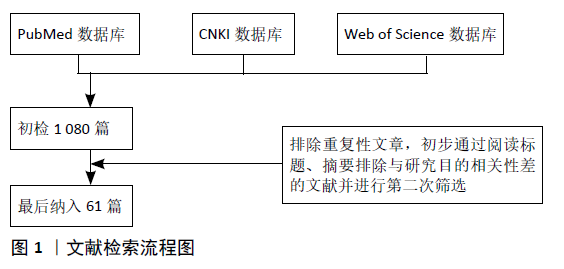[1] Lima JHC, Valiev R, Elias CN, et al. Biomedical Applications of Titanium and its Alloys. JOM. 2008;60(3):46-49.
[2] 郑玉峰,吴远浩.处在变革中的医用金属材料[J].金属学报,2017, 53(3):257-297.
[3] STAIGER MP, PIETAK AM, HUADMAI J, et al. Magnesium and its alloys as orthopedic biomaterials: a review. Biomaterials. 2006;27(9): 1728-1734.
[4] ERINC M, SILLEKENS WH, MANNENS RGTM, et al. Applicability of existing magnesium alloys as biomedical implant materials. In Proceedings of the Magnesium Technology 2009, San Francisco, CA, USA, 2009:209-214.
[5] HENCH LL, POLAK JM. Third-generation biomedical materials. Science. 2002;295(5557):1014-1017.
[6] ESMAILY M, SVENSSON JE, FAJARDO S, et al. Fundamentals and advances in magnesium alloy corrosion. Prog Mater Sci. 2017;89(8): 92-193.
[7] HAO Y, WANG L, REN L, et al. A novel nano-copper-bearing stainless steel with reduced Cu2+ release only inducing transient foreign body reaction via affecting the activity ofNF-κB and Caspase 3. Int J Nanomedicine. 2015;10:6725-6739.
[8] SUN ZQ, REN L, YANG K. Study on Antibacterial Performance of Copper-bearing Stainless Steel Used for Acupuncture Needles. Chin Med Dev. 2017;32(1):7-9.
[9] REN L, CHONG J, LOYA A, et al. Determination of Cu2+ ions release rate from antimicrobial copper bearing stainless steel by joint analysis using ICP-OES and XPS. Mater Technol. 2015;30(B2):B86-B89.
[10] NIINOMI M, NAKAI M. Titanium-Based Biomaterials for Preventing Stress Shielding between Implant Devices and Bone. Int J Biomater. 2011;2011:836587:1-836587:10.
[11] HATTORI T. Development of Low Rigidity β-type Titanium Alloy for Biomedical Applications. 2005;43(12):2970-2977.
[12] 杨佑飞.应力作用下骨植入镁合金体内外降解行为研究[D].郑州:郑州大学,2019.
[13] NIINOMI M, NAKAI M, HIEDA J. Development of new metallic alloys for biomedical applications. Acta Biomater. 2012;8(11):3888-3903.
[14] 王双雄.镁合金ZK60表面Ta-O/Mg复合涂层的制备与性能研究[D].株洲:湖南工业大学,2019.
[15] Song G. Control of biodegradation of biocompatable magnesium alloys. Corrosion Science. 2007;49(4):1696-1701.
[16] CASTELLANI C, LINDTNER RA, HAUSBRANDT P, et al. Bone-implant interface strength and osseointegration: Biodegradable magnesium alloy versus standard titanium control. Acta Biomater. 2011;7(1): 432-440.
[17] BRAR HS, PLATT MO, SARNTINORANONT M, et al. Magnesium as a biodegradable and bioabsorbable material for medical implants. JOM. 2009;61(9):31-34.
[18] XIAO M, CHEN YM, BIAO MN, et al. Bio-functionalization of biomedical metals. Mater Sci Eng C. 2017;70(2):1057-1070.
[19] ROBERTSON DM, PIERRE L, CHAHAL R. Preliminary observations of bone ingrowth into porous materials. J Biomed Mater Res. 1976;10(3): 335-344.
[20] HULBERT SF. Potential of ceramic materials as permanently implantable skeletal prostheses. J Biomed Mater Res. 1970;4(3):433-456.
[21] SETZER B, BÄCHLE M, METZGER MC, et al. The gene-expression and phenotypic response of hFOB 1.19 osteoblasts to surface-modified titanium and zirconia. Biomaterials. 2009;30(6):979-990.
[22] LI L, YANG S, XU L, et al. Nanotopography on titanium promotes osteogenesis via autophagy-mediated signaling between YAP and β-catenin. Acta Biomater. 2019;96:674-685.
[23] KENAR H, AKMAN E, KACAR E, et al. Femtosecond laser treatment of 316L improves its surface nanoroughness and carbon content and promotes osseointegration: An in vitro evaluation. Colloids Surf B. 2013;34(4):1-6.
[24] FAIA-TORRES AB, CHARNLEY M, GOREN T, et al. Osteogenic differentiation of human mesenchymal stem cells in the absence of osteogenic supplements: A surface-roughness gradient study. Acta Biomater. 2015;28:64-75.
[25] DELIGIANNI DD, KATSALA N, LADAS S, et al. Effect of surface roughness of the titanium alloy Ti-6Al-4V on human bone marrow cell response and on protein adsorption. Biomaterials. 2001;22(11): 1241-1251.
[26] SIDAMBE AT. Biocompatibility of Advanced Manufactured Titanium Implants-A Review. Materials. 2014;7(12):8168-8188.
[27] ELSAYED H, REBESAN P, GIACOMELLO G, et al. Direct ink writing of porous titanium (Ti6Al4V) lattice structures. Mater Sci Eng C. 2019;103: 109794.
[28] KLEGER N, CIHOVA M, MASANIA K, et al. 3D Printing of Salt as a Template for Magnesium with Structured Porosity. Adv Mater. 2019; 31(37):e1903783.
[29] RYAN G, PANDIT A, APATSIDIS DP. Fabrication methods of porous metals for use in orthopaedic applications. Biomaterials. 2006;27(13): 2651-2670.
[30] YI T, ZHOU C, MA L, et al. Direct 3D printing of Ti-6Al-4V/HA composite porous scaffolds for customized mechanical properties and biological functions. J Tissue Eng Regen Med. 2020;14(3):36.
[31] ZHAO GH, AUNE RE, ESPALLARGAS N. Tribocorrosion studies of metallic biomaterials: The effect of plasma nitriding and DLC surface modifications. J Mech Behav Biomed Mater. 2016;63:100-114.
[32] WANG JL, LIU RL, MAJUMDAR T, et al. A closer look at the in vitro electrochemical characterisation of titanium alloys for biomedical applications using in-situ methods. Acta Biomater. 2017;54:469-478.
[33] GALLI C, GUIZZARDI S, PASSERI G, et al. Comparison of human mandibular osteoblasts grown on two commercially available titanium implant surfaces. J Periodontol. 2005;76(3):364-372.
[34] BOWERS KT, KELLER JC, RANDOLPH BA, et al. Optimization of surface micromorphology for enhanced osteoblast responses in vitro. Int J Oral Maxillofac Implants. 1992;7(3):302-310.
[35] TIAN B, CHEN W, YU D, et al. Fabrication of silver nanoparticle-doped hydroxyapatite coatings with oriented block arrays for enhancing bactericidal effect and osteoinductivity. J Mech Behav Biomed Mater. 2016;61:345-359.
[36] DOOSTI-TELGERD M, MAHDAVI FS, MORADIKHAH F, et al. Nanofibrous Scaffolds Containing Hydroxyapatite and Microfluidic-Prepared Polyamidoamin/BMP-2 Plasmid Dendriplexes for Bone Tissue Engineering Applications. Int J Nanomedicine. 2020;15:2633-2646.
[37] URBANSKI W, MARYCZ K, KRZAK J, et al. Cytokine induction of sol-gel-derived TiO2 and SiO2 coatings on metallic substrates after implantation to rat femur. Int J Nanomedicine. 2017;12:1639-1645.
[38] ZEMTSOVA EG, ARBENIN AY, VALIEV RZ, et al. Two-Level Micro-to-Nanoscale Hierarchical TiO₂ Nanolayers on Titanium Surface. Materials (Basel). 2016;9(12):1010.
[39] QING Y, LI K, LI D, et al. Antibacterial effects of silver incorporated zeolite coatings on 3D printed porous stainless steels. Mater Sci Eng C Mater Biol Appl. 2020;108:110430.
[40] ZAATREH S, HAFFNER D, STRAUß M, et al. Fast corroding, thin magnesium coating displays antibacterial effects and low cytotoxicity. Biofouling. 2017;33(4):294-305.
[41] ZHAO D, WITTE F, LU F, et al. Current status on clinical applications of magnesium-based orthopaedic implants: A review from clinical translational perspective. Biomaterials. 2017;112:287-302.
[42] LING T, YU M, WENG W, et al. Improvement of drug elution in thin mineralized collagen coatings with PLGA-PEG-PLGA micelles.J Biomed Mater Res A. 2013;101(11):3256-3265.
[43] SOMAYAJI SN, HUET YM, GRUBER HE, et al. UV-killed Staphylococcus aureus enhances adhesion and differentiation of osteoblasts on bone-associated biomaterials. J Biomed Mater Res A. 2010;95(2):574-579.
[44] KE D, VU AA, BANDYOPADHYAY A, et al. Compositionally graded doped hydroxyapatite coating on titanium using laser and plasma spray deposition for bone implants. Acta Biomater. 2019;84:414-423.
[45] HUYNH V, NGO NK, GOLDEN TD. Surface Activation and Pretreatments for Biocompatible Metals and Alloys Used in Biomedical Applications. Int J Biomater. 2019;2019(2):1-21.
[46] RIOS-PIMENTEL FF, CHANG R, WEBSTER TJ, et al. Greater osteoblast densities due to the addition of amphiphilic peptide nanoparticles to nano hydroxyapatite coatings. Int J Nanomedicine. 2019;14: 3265-3272.
[47] ZHANG L, CHEN Y, RODRIGUEZ J, et al. Biomimetic helical rosette nanotubes and nanocrystalline hydroxyapatite coatings on titanium for improving orthopedic implants. Int J Nanomedicine. 2008;3(3):323-333.
[48] DUAN K, WANG R. Surface modifications of bone implants through wet chemistry. J Mater Chem. 2006;16(24):2309-2321.
[49] LU RJ, WANG X, HE HX, et al. Tantalum-incorporated hydroxyapatite coating on titanium implants: its mechanical and in vitro osteogenic properties.J Mater Sci Mater Med. 2019;30(10):111.
[50] ABDAL-HAY A, HASAN A, KIM YK, et al. Biocorrosion behavior of biodegradable nanocomposite fibers coated layer-by-layer on AM50 magnesium implant.Mater Sci Eng C Mater Biol Appl. 2016;58: 1232-1241.
[51] FITZPATRICK N, BLACK C, CHOUCOURN M, et al. Treatment of a large osseous defect in a feline tarsus using a stem cell-seeded custom implant. J Tissue Eng Regen Med. 2020;14(10):6.
[52] GREER A, GORIAINOV V, KANCZLER J, et al. Nanopatterned Titanium Implants Accelerate Bone Formation In Vivo. ACS Appl Mater Interfaces. 2020;12(30):1-29.
[53] MU C, HU Y, HOU Y, et al. Substance P-embedded multilayer on titanium substrates promotes local osseointegration via MSC recruitment. J Mater Chem B. 2020;8(6):1212-1222.
[54] WEI F, LI M, CRAWFORD R, et al. Exosome-integrated titanium oxide nanotubes for targeted bone regeneration. Acta Biomater. 2019;86: 480-492.
[55] NA K, KIM SW, SUN BK, et al. Osteogenic differentiation of rabbit mesenchymal stem cells in thermo-reversible hydrogel constructs containing hydroxyapatite and bone morphogenic protein-2 (BMP-2). Biomaterials. 2007;28(16):2631-2637.
[56] PHINNEY DG, PITTENGER MF. Concise Review: MSC-Derived Exosomes for Cell-Free Therapy. Tem Cells. 2017;35(4):851-858.
[57] ZHANG J, LIU X, LI H, et al. Exosomes/tricalcium phosphate combination scaffolds can enhance bone regeneration by activating the PI3K/Akt signaling pathway. Stem Cell Res Ther. 2016;7(1):136.
[58] GRIER WK, TIFFANY AS, RAMSEY MD, et al. Incorporating β-cyclodextrin into collagen scaffolds to sequester growth factors and modulate mesenchymal stem cell activity. Acta Biomater. 2018;76:116-125.
[59] YANG J, ZHANG YS, YUE K, et al. Cell-laden hydrogels for osteochondral and cartilage tissue engineering. Acta Biomater. 2017;57:1-25.
[60] MORELLE XP, ILLEPERUMA WR, TIAN K, et al. Highly Stretchable and Tough Hydrogels below Water Freezing Temperature. Adv Mater. 2018;30(35):1-8.
[61] HAYAMI JW, WALDMAN SD, AMSDEN BG. A photocurable hydrogel/elastomer composite scaffold with bi-continuous morphology for cell encapsulation. Macromol Biosci. 2011;11(12):1672-1683. |


